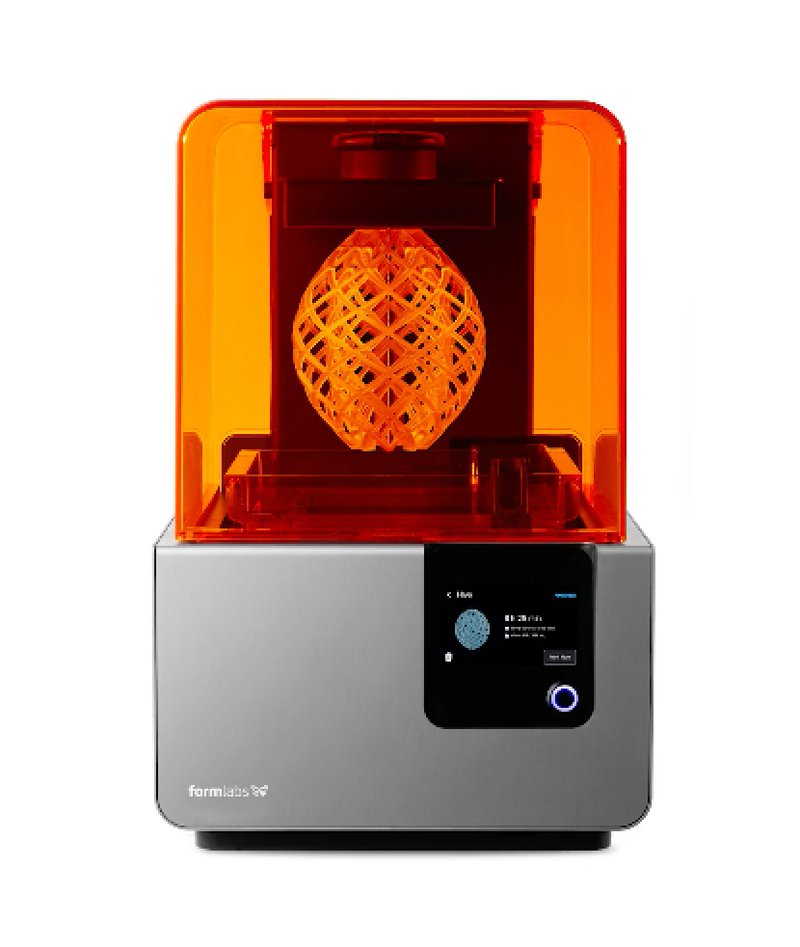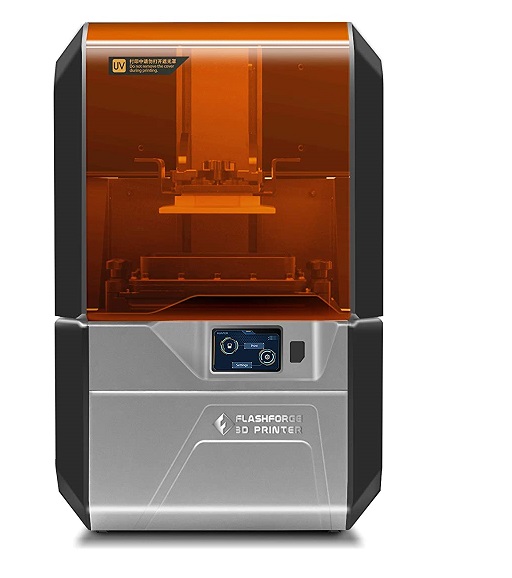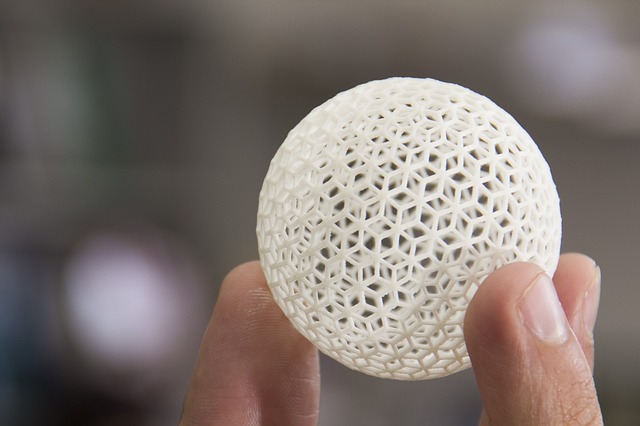Various types of 3D printing technologies are available for rapid prototyping or small batch production of plastic and metal parts. It has the advantage of quick turnaround time, and special tooling is not required to develop prototypes.
This article covers different types of 3D printing technologies and their applications. We suggest you also read this article on types of metal 3D printers
Types of 3D Printing Technology
Following types of additive manufacturing technologies are widely used to manufacture plastic and metal parts quickly. Each of these 3D printing technologies has its advantages, limitations, and applications.
- Fusion Deposition Modelling (FDM)
- Stereolithographic (SLA)
- Digital Light Processing (DLP)
- Selective Laser Sintering (SLS)
- Material Jetting
- Polyjet Printing
- Multijet Printing
- Direct Metal Laser Sintering (DMLS)
- Electron Beam Melting (EBM)
- Selective Laser Melting
1. Fusion Deposition Modelling (FDM)
In FDM 3D printing technology, heated thermoplastic material comes out through a nozzle layer by layer to manufacture 3D printed plastic parts.
After each layer extrudes, the build platform moves down to make space for the next layer. Therefore printing layer thickness depends on the nozzle diameter. The smaller the layer thickness smoother will be the part finish.
ABS, ASA, Nylon, PC, PC+ABS, PLA equivalent FDM materials are available in multiple colors. Material selection for FDM 3D printing is done according to the required application. Click this link to know the difference between FDM printing materials: ABS vs PLA vs Nylon.
Advantages of FDM 3D Printing
FDM 3D printing process has the following advantages.
- Affordable low-cost desktop FDM 3D printers are available in the market.
- Cheapest available 3D printing technology.
- The manufacturing of complex geometries is feasible.
- Integration of multiple components into one part is possible.
- You can incorporate complex features (such as undercuts, interior features, and attachment fittings) into 3D printed parts.
Disadvantages of FDM 3D Printing
FDM 3D printing process has the following limitations.
- Rough surface finish.
- FDM 3D printed parts are porous. Therefore you can not use FDM 3D printed parts to manufacture waterproof products or IP-Rating testing.
- Difficult to manufacture critical features such as snaps.
2. Stereolithographic (SLA)
SLA additive Manufacturing Process utilizes liquid photo-polymer resin material to manufacture 3D printed parts. In this, the light source solidifies the liquid material layer by layer.
During SLA 3D printing, the build platform is submerges into a translucent tank filled with liquid resin. Afterward, a light source inside the 3D Printer solidifies the liquid material layer by layer. The platform lifts to create the next layer after the solidification of one printing layer. This process is repeated layer by layer until the part is ready.

SLA 3D printing has application to manufacture of highly detailed sculptures, jewelry molds, and prototypes. Following are the advantages and disadvantages of SLA 3D printing.
Advantages of SLA 3D Printing
SLA 3D printing technology has the following advantages.
- Highly accurate parts.
- Smooth surface finish.
- Low-cost SLA desktop 3D printers are available.
Disadvantages of SLA 3D Printing
SLA 3D printing process has the following disadvantages.
- Not recommended for manufacturing large parts.
- The manufacturing process is a bit messy.
- High material cost.
- High 3D printer cost compared to FDM 3D printer.
3. Digital Light Processing (DLP)
DLP 3D printer also works on vat polymerization technology. It utilizes a digital light projector screen to cure the liquid polymer.
Compared to SLA 3d printing, the DLP projector screen cures the complete layer of the liquid material instead of point-to-point curing.

Advantages of DLP 3D Printer
- Faster than SLA 3D printing.
- Good resolution parts.
- Clear parts can be 3D printed using clear resin.
Disadvantages of DLP 3D Printers
- The part Cleaning process is messy
- High machine and unit part manufacturing cost.
- Limited Commercial grade materials are available for 3D Printing.
4. Selective Laser Sintering (SLS)
SLS 3D printing utilizes a laser beam to sinter the powdered plastic material to manufacture solid parts.
For SLS 3D printing, the powder is pre-heated at a temperature just below the powder melting point. Laser scans the cross-section of the 3D cad model and heats the powder at its melting point. As a result, powder fuses to make a solid geometry. Afterward, the build platform is moved downward layer by layer to create a solid geometry.
During SLA 3d printing process, the unfused powder works as a support structure for the part. Nylon (PA11 & PA12) materials are widely used for SLS 3D printing.

Advantages of Selective Laser Sintering
SLS 3D printing has the following advantages:
- A dedicated support structure is not required.
- Complex geometries can be 3D printed.
- Good surface finish,
- SLS Nylon is a good alternative to injection-molded plastic.
Disadvantages of Selective Laser Sintering
SLS 3D printing has the following limitations:
- Material is porous and brittle.
- Similar to SLA, the SLS 3D printing process is messy.
- Manufactured parts are prone to warpage
- High post-processing time.
5. Polyjet 3D Printing
Polyjet type of 3D printing technology utilizes UV light to solidify photopolymer material. During Polyjet 3D-Printing liquid polymer is sprayed from a multi-nozzle print head. Afterward, a UV light instantly solidifies the liquid polymer.
Once a layer is cured, the platform moves downward in the z-direction, and the nozzle sprays the polymer. In this way, a 3D printed part is manufactured layer by layer.
Advantages of PolyJet 3D Printing
- Smooth Part Finish.
- High accuracy (up to 0.016 mm).
- Can manufacture thin walls and complex geometries.
- Multicolor and multi-material 3D printing is possible.
Disadvantages of PolyJet 3D Printing
- Costly and time-consuming process.
- The printer and material required protection from direct light.
- The water jets removes the supports from 3D printed parts. This makes the process messy.
6. Direct Metal Laser Sintering (DMLS)
The direct metal laser sintering (DMLS) additive manufacturing process utilizes a fine laser beam to weld and fuse metal powder and manufactures metal parts.
Therefore the resolution of 3D printed metal parts depends on the powdered metal particle size, laser beam, and bed movement. Compared to selective laser melting, DMLS does not melt metal particles. It heats metal particles so that their surface gets welded with each other.
Advantages of Direct Metal Laser Sintering
- Metal parts can be 3D printed.
- A variety of metals can be 3D Printed.
Disadvantages of Direct Metal Laser Sintering
- High Cost
- Smaller Build Area
- Porous parts.
7. Selective Laser Melting
Selective laser melting (SLM) is a type of 3D printing technology that utilizes a laser to melt metal powder instead of welding it. SLM 3D printed metal parts are equivalent to the parts manufactured using traditional manufacturing processes.
Advantages of Selective Laser Melting (SLM)
- Various types of metal can be 3D printed.
- Can manufacture complex shapes and internal features.
- Manufactured parts have properties similar to parts manufactured with traditional manufacturing processes.
Disadvantages of Selective Laser Melting (SLM)
- High Cost.
- Rough surface finish.
- Post-processing operations are required.
8. Electron Beam Melting
The Electron beam melting (EBM) process utilizes a high-power electron beam to melt metal powder layer by layer to manufacture solid metal parts by fusing melted metal layers.
EBM additive manufacturing process is done in a vacuum chamber to prevent contamination and oxidation of the metal powder. It has applications in manufacturing low-weight aerospace, medical and defense components.
Advantages of Electron Beam Melting
- Faster printing speed.
- High-quality metal parts equivalent to casting can be 3D printed.
- Less support structure.
- Less residual stress in printed parts.
Disadvantages of Electron Beam Melting
- Lower Accuracy.
- High Cost Compared to SLM and DMLS.
- Limited Material options.
We will keep adding more updates on various types of 3D printing technology. Please add your suggestions, comments, or questions on different types of 3D printing technology in the comment box.

Add a Comment